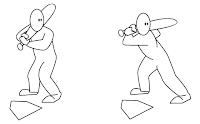3 Type of Stages
Pre-production Stage
1. Idea.
2. Storyboard.
3. Recorded voice.
4. Analysing the distance of sound from a number of frames.
5. Analysed sound is inserted into dope sheet.
6. Drawing Scene Layout.
7. Director used layout and dope sheet to plan movement and time.
8. Drawing background is coloured on the paper.
Production Stage
9. Movements are drawn on the paper.
10. A perfect drawing is recorded on the dope sheet.
11. Draw movements on the line test
12. Check the drawing and synchronize the time.
13. Place the drawing on the cell.
14. Colouring cell.
15. Cell and drawing background are combined together.
16. Cell and drawing background are combined to the film.
Post Production Stage
17. Negative that has been used is sent to the lab to be processed.18. Sound and voice are edited.
19. Soundtrack will be mixed in the studio.
20. Negative is sent to the lab to be cut with cut-print and sound.
21. Film is copied in the form of videotape.
22. Or shown in the cinema.
Prepared, Presented and Posted by Nur Syuhada Zakaria
